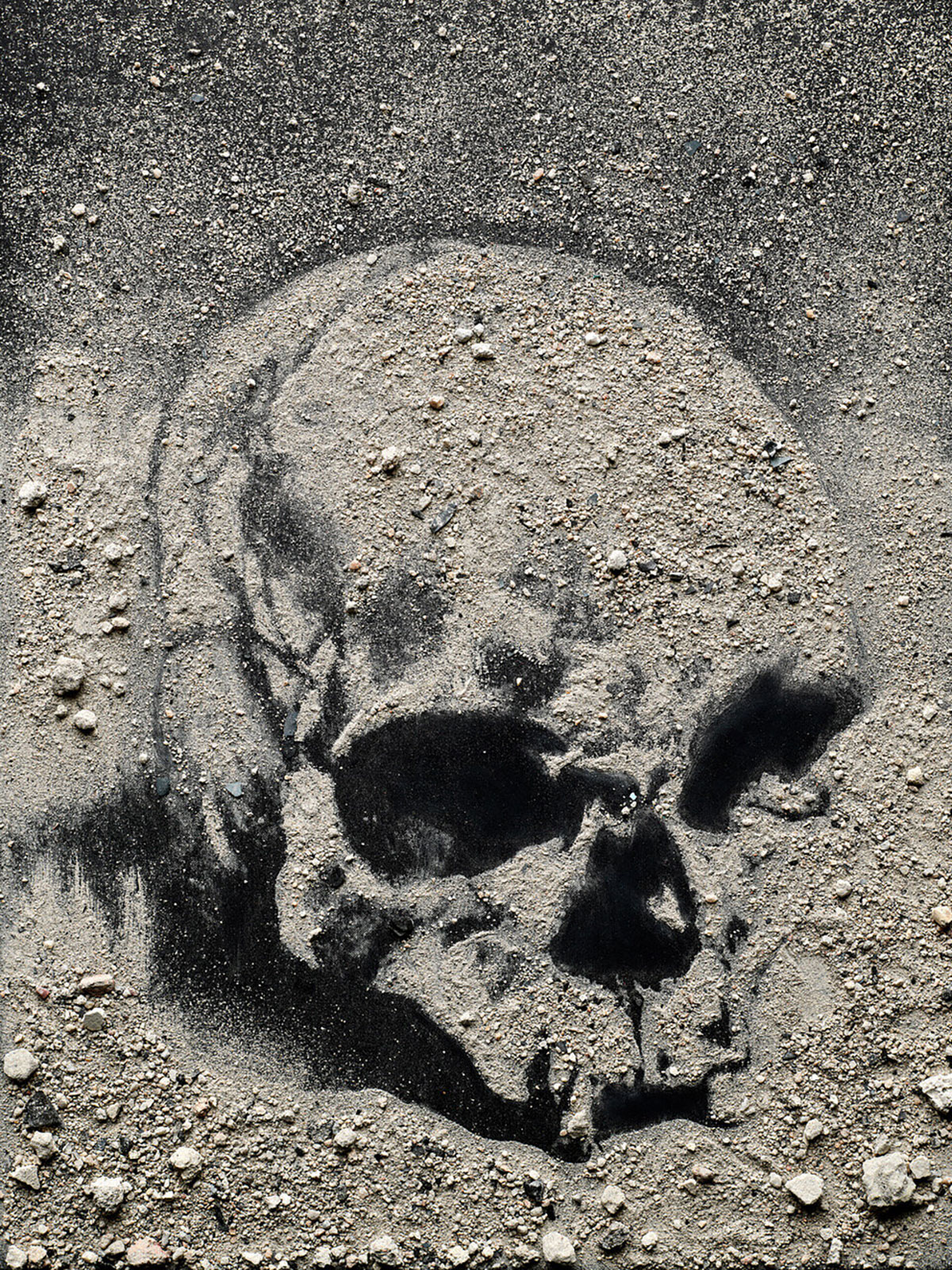Vik Muniz: Museum of Ashes opens with a second exhibition Pictures of Paint at Sikkema Jenkins in Chelsea, NYC on Thursday, October 10, 2019.
Brazilian National Museum Fire in Rio de Janeiro
One of the great tragedies of modern Brazil occurred on September 2, 2018 when the National Museum in Rio de Janeiro burned to the ground. One of the great treasures of Brazil had no sprinkler system. When firefighters arrived, the fire hydrants were dry. They tried to fight the fire with buckets.
Among the lost 20 million specimens from 200 years of collecting was “Luzia”. At 11,500 years old, her skull and pelvis were among the oldest human remains in the Americas. Also lost was the skeleton of a dinosaur Santanaraptor that had well preserved soft tissues, muscles.
Many of the specimens were the first and best of their kind. Part of the loss was the descriptions of these priceless objects. Even if recovered, scientists would have to figure out what they were, where they were found and so on.
Imagine how you would feel if the American Museum of Natural History burned down to the ground?
Vik Muniz
On that night Brazilians around the world cried because we lost so much of our history. So did Vik Muniz.
“I cried upon learning of the fire as if I had lost something personal, some kind of string that held the insanity of my present together. Brazil is a young country with a strategic neglect for its history and a ravenous appetite for the instantaneous. No other place in Brazil combined so much history and wonder.
We already live with an increasing deficit of reality and seeing history go up in flames made me feel groundless, trapped in an infinite present. We can only be creative in a world of facts and tangible realities.
A post-truth, nihilistic cultural environment inspires the opposite of creativity, which is baseless pragmatism. When the mind wanders entirely ignorant of time, illusion becomes a means of confinement.”
[Quote courtesy Sikkema Jenkins]
Muniz is a sculptor who became a renowned photographer by photographing his works. He is one of the Latin artists whose work thrives in the secondary auction market. That is how we first noticed him by deconstructing the New York City art auctions.
Obviously a talented artist, Muniz also has that very Brazilian knack for making something out of nothing. Some Brazilians can turn a t-shirt into a soccer ball or make all the sounds of a full drum kit from a tin can. This skill is probably born out of living at the end of the world or the beginning of the world, depending on your point of view.
The artist became famous for recreating images from art history with everyday materials, everything from coffee grinds to diamonds.
Museum of Ashes
Muniz contacted the museum and asked how he could help. With little support, scientists were sifting through the remains.
They agreed to provide him with ashes that went through the sifters and the precise location where the ashes were from in the museum.
Like a phoenix, Muniz reconstructed images of some of the objects using their own ashes with photos of the exhibits as guides. He then photographed them in his usual way.
He also 3D printed some objects with ashes using information from 3D x-ray scans.
The work is not only beautiful. It reminds us of what was lost and begs the question of whether life itself is real or life is but a dream.

The Museum of Ashes takes the Brazilian idea of “saudade” (deep longing) to another level. The gallery should probably keep a box of tissues handy for visitors.
